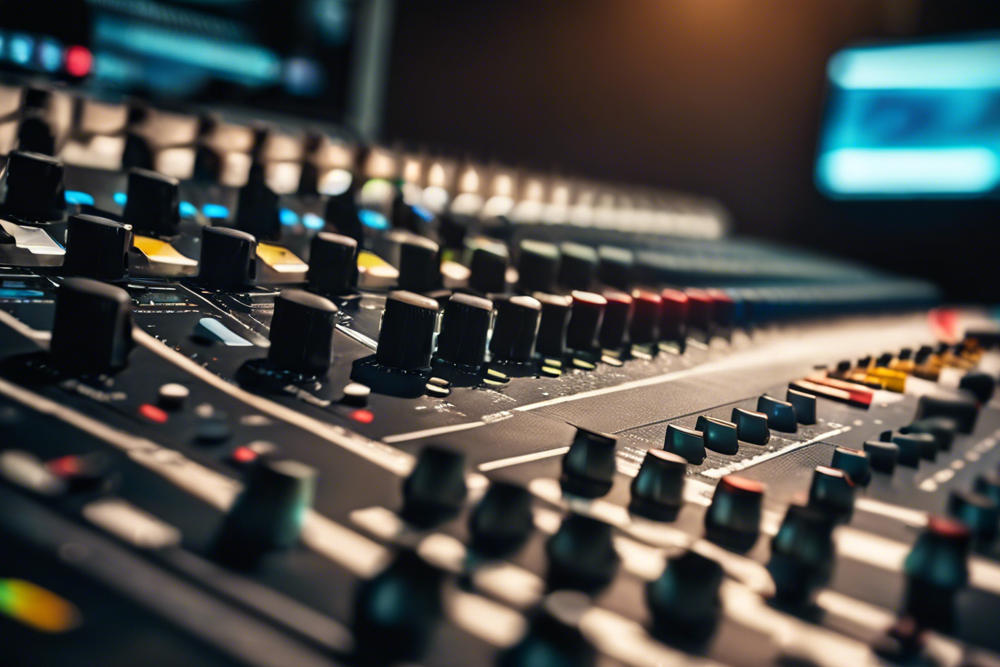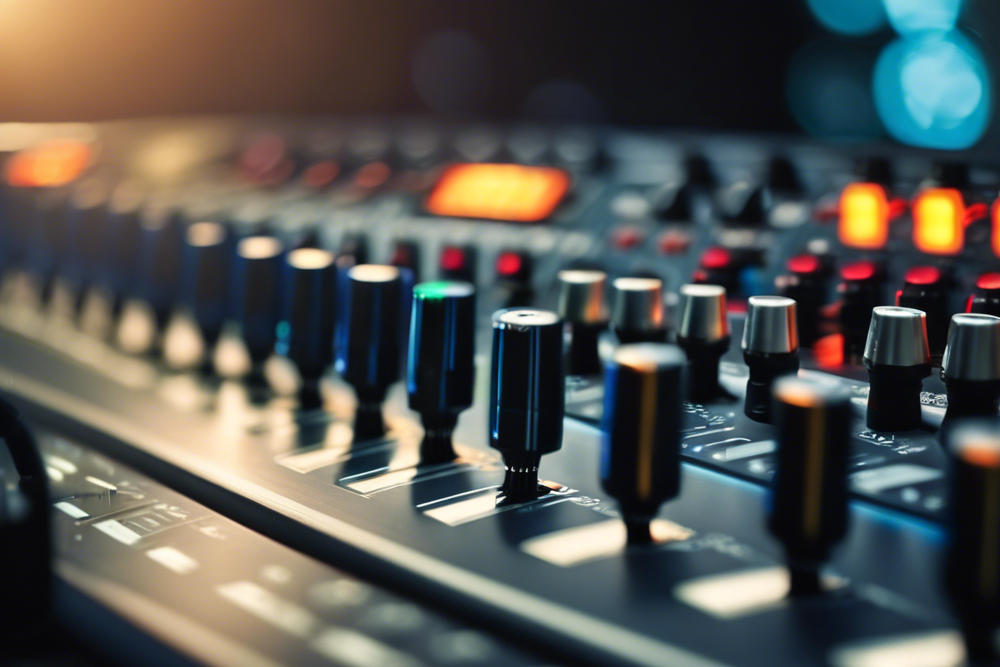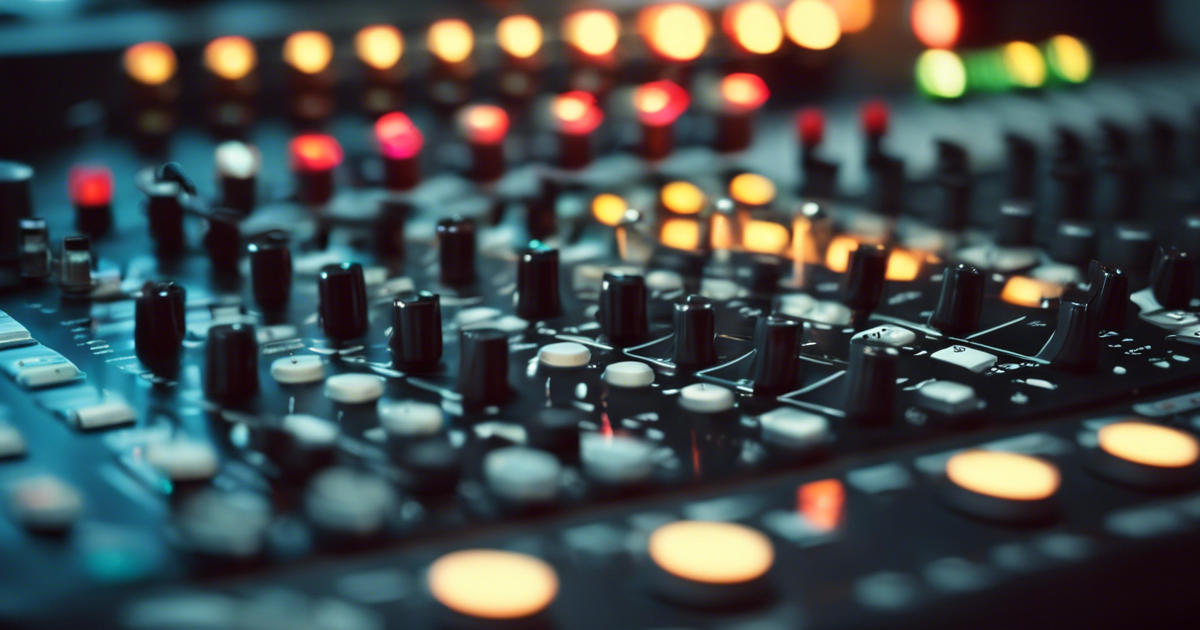Estimated reading time: 7 minutes
When you’re working with an audio mixer, you’ll often come across the term “FX.” But what is FX in audio mixer terminology? FX, short for effects, refers to various audio processing techniques used to alter and enhance the original sound. These effects play a crucial role in shaping the overall sound of a mix, adding depth, texture, and character to individual channels or the entire audio output.
In the world of audio production, FX are essential tools that allow sound engineers and music producers to manipulate the audio signal in creative ways. Whether you’re working with a simple analog mixer or a sophisticated digital audio workstation (DAW), understanding FX is key to achieving professional-sounding results.
Table of contents
Types of FX in Audio Mixers
Audio mixers typically offer a range of built-in effects, and many can also integrate with external effects units. Here are some common types of FX you’ll encounter:
- Reverb: Simulates the natural reflections of sound in various acoustic spaces, adding depth and ambiance to the audio.
- Delay: Creates echoes or repetitions of the original sound, useful for adding rhythmic elements or spatial effects.
- EQ (Equalization): Allows adjustment of specific frequency ranges, helping to shape the tonal characteristics of the audio.
- Compression: Controls the dynamic range of the audio signal, evening out volume levels and adding punch to the sound. See here how to compress vocals, for example.
- Modulation Effects: Includes effects like chorus, flanger, and phaser, which add movement and texture to the sound.
- Pitch Correction: Helps adjust the pitch of vocals or instruments, ranging from subtle tuning to more dramatic effects.
- Distortion: Adds harmonics to the signal, creating a gritty or overdriven sound often used in rock and electronic music.
Each of these effects can be applied to individual channels or the main mix, depending on the mixer’s capabilities and the desired outcome.
How FX Affects the Audio Signal
When you apply FX to an audio signal, you’re essentially processing the original sound (also known as the “dry” signal) to create a modified version (the “wet” signal). The degree to which the effect is applied is often controlled by a wet/dry mix parameter, allowing you to blend the processed and unprocessed sounds.
For example, when using reverb:
- The dry signal is the original, unprocessed audio input.
- The wet signal is the audio after it has been processed through the reverb effect.
- The mix control lets you determine how much of the wet signal is blended with the dry signal in the final output.
Understanding this concept is crucial for achieving a balanced and professional-sounding mix.

FX Placement in the Signal Chain
The placement of effects in the audio signal chain can significantly impact the final sound. In most audio mixers, you’ll find two main ways to apply effects:
- Insert FX: These are applied directly to individual channels before the channel fader. Insert effects process the entire signal and are typically used for dynamics processing (like compression) or EQ.
- Send/Return FX: Also known as auxiliary effects, these allow you to send a portion of the signal from multiple channels to a shared effect. This is commonly used for reverb and delay, as it allows you to apply the same effect to multiple sources while conserving processing power.
Some mixers also offer the option to apply effects pre-fader or post-fader:
- Pre-fader: The effect is applied before the channel’s volume fader, meaning the effect level remains constant regardless of the fader position.
- Post-fader: The effect is applied after the channel’s volume fader, so the effect level changes proportionally with the fader position.
Common FX Controls and Parameters
While each type of effect has its unique parameters, there are some common controls you’ll encounter across various FX:
- Mix/Blend: Controls the balance between the dry and wet signals.
- Level/Gain: Adjusts the overall output level of the effect.
- Frequency: In EQ and filter effects, this determines which frequencies are affected.
- Time/Rate: In time-based effects like delay or modulation, this controls the speed or duration of the effect.
- Feedback: In delay-based effects, this determines how many repetitions occur.
- Depth: Often found in modulation effects, this controls the intensity of the effect.
Understanding these parameters allows you to fine-tune your effects and achieve the desired sound.

Built-in vs. External FX Units
Many modern audio mixers come with built-in digital effects processors, offering a range of FX options right out of the box. However, some mixers, especially analog ones, may require external effects units for more advanced processing.
Built-in FX advantages:
- Convenient and integrated into the mixer’s workflow
- Often more cost-effective
- Typically easier to use with preset options
External FX advantages:
- Generally offer higher quality and more sophisticated processing
- Provide a wider range of effect options
- Allow for more detailed control and customization
For professional audio production, a combination of built-in and external effects is often used to achieve the best results.
FX in Digital and Analog Mixers
The approach to FX differs between digital and analog mixers:
Digital Mixers:
- Often come with a wide range of built-in effects
- Allow for recall and automation of effect settings
- Provide more flexibility in routing and applying effects
- May support software plugins for additional effects
Analog Mixers:
- Typically have fewer built-in effects, often limited to basic EQ
- Require external effects units for more advanced processing
- Offer a warmer, more organic sound that some producers prefer
- May include send/return loops for integrating external effects
Tips for Using FX in Audio Mixing
- Less is often more: Start with subtle effects and gradually increase as needed.
- Consider the context: Choose effects that complement the genre and style of the music.
- Use EQ before other effects: This helps clean up the signal before applying other processing.
- Experiment with effect order: The sequence of effects can significantly impact the final sound.
- Be mindful of phase issues: Some effects can cause phase cancellation, especially when used in stereo.
- Use automation: Varying effects parameters throughout a mix can add interest and movement.
- Reference professional mixes: Listen to well-produced tracks in your genre for inspiration on effect use.
Video: What Does FX Knob Do? | Audio Mixer FX Send Setup
Conclusion
Understanding what FX is in an audio mixer opens up a world of creative possibilities in sound production. From simple EQ adjustments to complex modulation effects, FX allows you to shape and enhance your audio in countless ways. Whether you’re working with a basic analog setup or a feature-rich digital mixer, mastering the use of effects is crucial for achieving professional-sounding results.
Remember, while effects can greatly enhance a mix, they should always serve the overall vision of the production. Use them wisely, and don’t be afraid to experiment to find the perfect sound for your project.
Related Posts
- What is a Masterclass? The Ultimate Online Learning Experience for Music Producers
- What Are 808 Beats? From Underground Grooves to Mainstream Melodies
- What is an Interlude in an Album? Unraveling the Musical Magic Between Tracks
- What Makes a Good Song? Unlocking the Mysteries of Memorable Music
- What is Quantization in Music? Unraveling the Mystery
- What is Bass in Music? Delve Into the Importance of Bass in Music
FAQs
FX stands for effects in an audio mixer. It refers to various audio processing techniques used to alter and enhance the original sound, adding depth, texture, and character to the mix.
Common types of FX in audio mixers include reverb, delay, EQ (equalization), compression, modulation effects (chorus, flanger, phaser), pitch correction, and distortion. Each effect serves a unique purpose in shaping and enhancing the audio signal.
FX process the original sound (dry signal) to create a modified version (wet signal). The wet/dry mix parameter controls the balance between processed and unprocessed sounds, crucial for achieving a balanced and professional mix.
Insert FX are applied directly to individual channels before the channel fader, processing the entire signal. Send/Return FX (auxiliary effects) send a portion of the signal from multiple channels to a shared effect, conserving processing power and applying the same effect to multiple sources.
Built-in FX are convenient, cost-effective, and integrated into the mixer’s workflow, often with preset options. External FX units generally offer higher quality, more sophisticated processing, a wider range of options, and more detailed control and customization.
